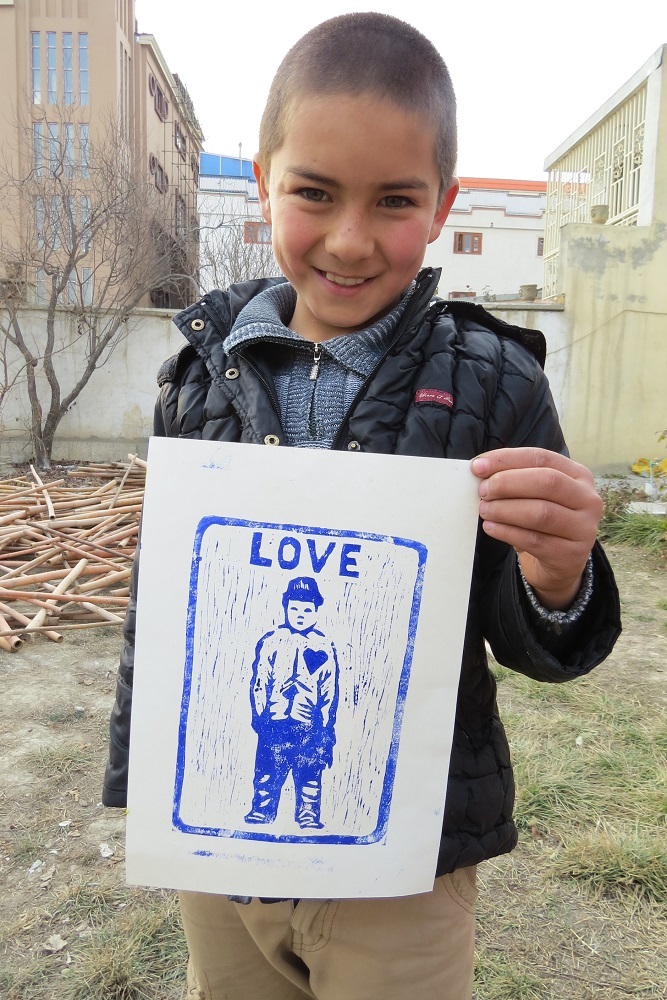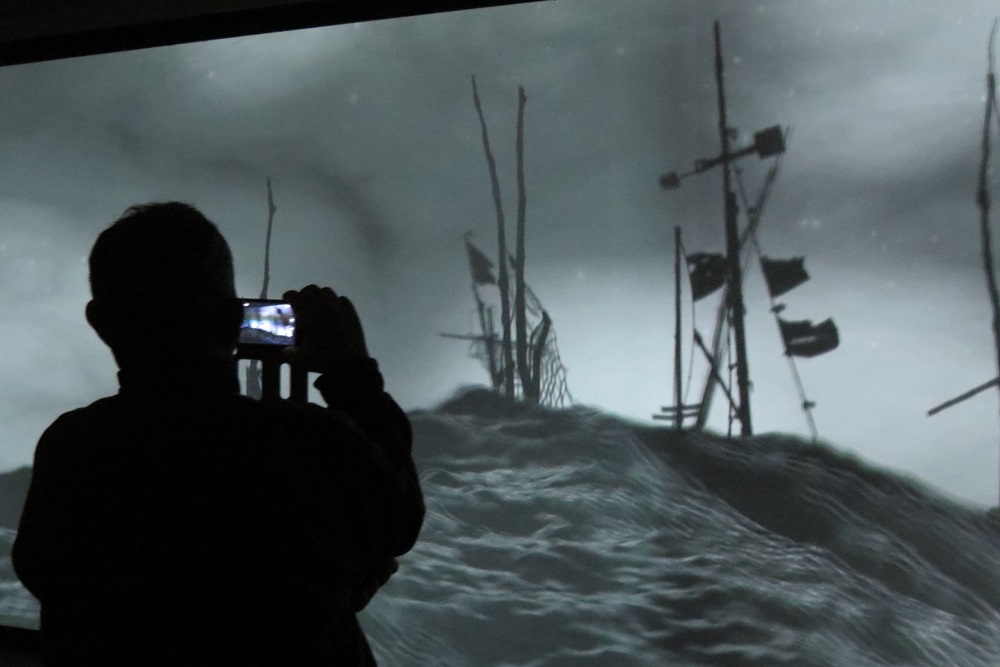Relationships – Reflections on Refugees
SPOTLIGHT, 25 Jan 2016
Dr Hakim, Afghan Peace Volunteers – TRANSCEND Media Service
[Submitted by Mairead Maguire, Nobel Peace Laureate and member of the TRANSCEND Network.]
19 Jan 2016 – As I put together this photo journal of an Iraqi father and his dear son seeking asylum in Finland, I found renewed hope in relationships.
Relationships change our lives, and so, they change our world every day.
As relationships are built on various aspects of love, they are powerful. If we build more and more relationships, they will be an alternative power to the abusive power of governments and corporations, and that’s when governments and corporations will become more obvious in their efforts to sabotage relationships.
But, relationships are not an ‘oppositional’ power. They are invitational, and completely unarmed. Therefore, they will overcome, someday.
Kathy Kelly, Cathy Breen, David Smith-Ferri, Bob Alberts ( U.S. peace activists with Voices for Creative Nonviolence ) and I visited Mohammad and Omar in Helsinki from the 7th to the 14th of Jan 2016.
Being a friend of the Afghan Peace Volunteers, I was also grateful for a chance to briefly meet three Afghans. Gul Agha and his daughter, Zainab, are Finnish Afghans who were refugees 15 years ago. Jafar arrived in Finland just three months ago.
We were hosted by Salla Nazarenko, the Executive Director of Physicians for Social Responsibility in Finland.
First, a brief about how the individuals in this journal connected with one another.
Kathy, Cathy, and David have been to Iraq at various times since 1996 as part of Voices for Creative Nonviolence’s work to resist U.S. economic sanctions and wars in Iraq, and at different times over those visits, they got to know Iraqi mechanical engineer Mohammad, now 46 years old, and his son, Omar, who turns 18 on the 19th of Jan. Bob Alberts has been supporting the work of Voices for Creative Nonviolence over the past few years. Kathy and David have visited me and the Afghan Peace Volunteers in Kabul many times since 2010.
Mohammad and Omar fled Iraq’s U.S.-driven sectarian war as refugees to Europe and arrived in Finland on the 20th of September 2015, after a harrowing two-month trip over land and sea.
Salla Nazarenko, who lives in Finland with two daughters, Ilse and Amanda, had written to Cathy after reading Cathy’s article on Mohammad and Omar.
Each person has family and friends who colour these friendships, pencils, water colours, oils, crayons…
Our recent war and peace story
After many empires, of different names ( ethnicities ) and continents over many centuries, and while the British and Russian empires seemed head-strong, World War I broke out.
It was not what it was meant to be, the ‘war to end all wars’. Though human resolve to ‘remove the scourge of war from future generations’ did grow, as stated in the 1945 post-WWII UN Charter, one of many Cold Wars ensued, and militarism became normal.
Today, new ‘types’ of military wars, along with economic and environmental wars, are fueled by the power and money interests of an increasingly small percentage of elites. Where ‘war’ isn’t a convenient word, ‘R2P’, ‘kinetic action’ and other names pacify us, more like, ‘maintain’ us.
The people suffer.
Very large numbers of people.
In 2015, mainly to escape wars, a record 59.5 million human beings were refugees, 86% of them seeking refuge and/or asylum in ‘developing’ countries, and only 14% in developed countries, including Europe.
The top five origins of refugees who have applied for asylum in Europe are Syria, Afghanistan, Kosovo, Iraq and Albania.
The top five EU countries in terms of asylum applications per 100,000 local ( EU ) population are Hungary, Sweden, Austria, Finland and Germany.
httpv://www.youtube.com/watch?v=yy6RIJbHPoc&feature=youtu.be
All these figures say practically nothing about the number of relationships involved in and affected by what must be one of the largest, nonviolent people movements in history, people choosing not to fight, but to take the risk of running away from what the United Nations High Commissioner for Refugees reported as our ‘world at war’.
Crowds, especially at travel stations, literally cross one another’s paths, but we don’t converse. We seem only to be able to handle input on the digital screen, not face-to-face. Even ‘at war’, we no longer wish to fight face-to-face; as far as possible, we do the killing remotely.
Some of us are even ‘at war’ with those ‘fleeing war’. We are wrapped up, working hard to make a living, so we are no longer able to question and address the root causes of human conflict. We presume that the war-refugees are running away from wars caused by the refugees themselves! Irrationally, we ‘feel’ that refugees are as dangerous as the ‘ISIS, Al Qaeda or Taliban extremists’ they are fleeing from.
Our vision is limited to our screens and ourselves.
But there is hope, re-ignited when we take a minute to call on the power of relationships, in asking one another, “Do you miss your family or friends?”
“Are you hurting?”
Continue reading Go to Original – enough.ourjourneytosmile.com
DISCLAIMER: The statements, views and opinions expressed in pieces republished here are solely those of the authors and do not necessarily represent those of TMS. In accordance with title 17 U.S.C. section 107, this material is distributed without profit to those who have expressed a prior interest in receiving the included information for research and educational purposes. TMS has no affiliation whatsoever with the originator of this article nor is TMS endorsed or sponsored by the originator. “GO TO ORIGINAL” links are provided as a convenience to our readers and allow for verification of authenticity. However, as originating pages are often updated by their originating host sites, the versions posted may not match the versions our readers view when clicking the “GO TO ORIGINAL” links. This site contains copyrighted material the use of which has not always been specifically authorized by the copyright owner. We are making such material available in our efforts to advance understanding of environmental, political, human rights, economic, democracy, scientific, and social justice issues, etc. We believe this constitutes a ‘fair use’ of any such copyrighted material as provided for in section 107 of the US Copyright Law. In accordance with Title 17 U.S.C. Section 107, the material on this site is distributed without profit to those who have expressed a prior interest in receiving the included information for research and educational purposes. For more information go to: http://www.law.cornell.edu/uscode/17/107.shtml. If you wish to use copyrighted material from this site for purposes of your own that go beyond ‘fair use’, you must obtain permission from the copyright owner.

